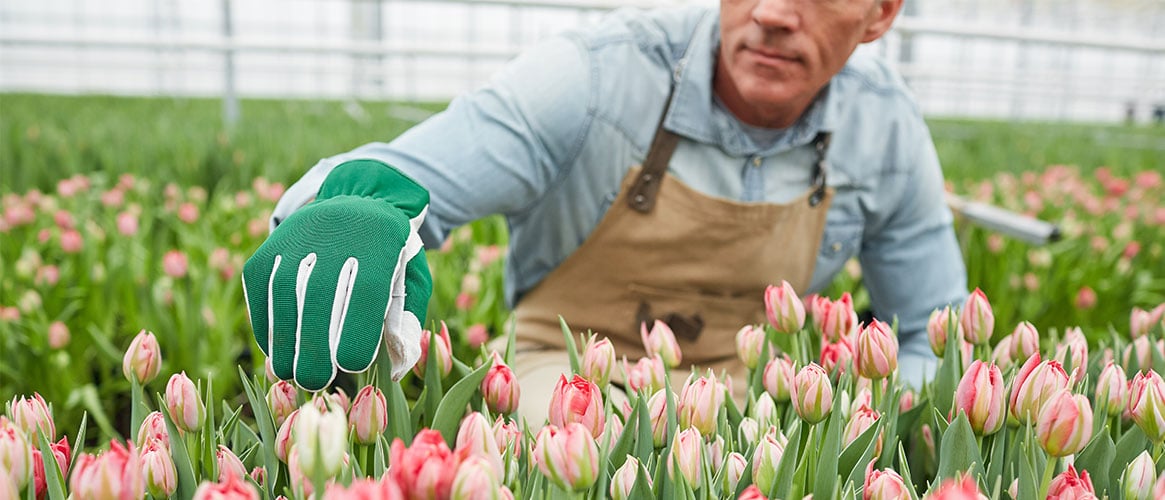Most everyone is aware of the “Leaves of Three, Let It Be” rhyme advising us to stay away from Poison Oak. Yet, not everyone is aware that some of the plants we see every day in our homes, at work, and in the front yard can also trigger some similar skin reactions.
It may seem surprising that contact with tulips or daffodils could cause dermatitis or skin allergies. But they can—especially for those that handle these types of plants throughout their work day. Landscapers and those working in a plant nursery not only pick up these plants each day, but also trim them to keep them healthy and looking nice.
The problem lies in the trimming process. As parts of the plant are cut, a sap releases from the inside. That sap has a similar enough makeup to poison oak that it causes the skin to react. That reaction can range from a short-term nuisance to a long-term medical problem.
What your employees need to know about plants that irritate the skin
The first sign of trouble is a rash, often accompanied by an itch. This might happen right away, or could happen a few hours after contact.
Workers may end up seeking treatment for the rash, but the immediate reaction typically is to scratch the itch. Doing so, however, can cause the rash to get larger and for the skin to open, exposing it to infection. Scratching the itch can also cause the sap to get on fingers thus increasing the risk it will spread.
In more severe cases, exposure to the plant sap can lead to hives and blisters. This will require medical treatment and a longer recovery time. It’s also a likely sign of a serious allergy that may preclude the employee from continuing work as a landscaper, nursery worker, or similar type of job.
What your employees need to do when working around plants that irritate the skin
Minimizing your workers’ exposure risk to plant sap starts with personal protective equipment. Employees should always wear gloves, long sleeves, pants, and close-toed shoes to keep as much skin covered as possible.
Employees should also avoid actions such as using the shirtsleeve to wipe away sweat on the face or forehead. Any sap on the clothing can transfer to the skin and cause the same allergic reactions mentioned above. A handkerchief is one possible solution to clearing sweat away.
If a rash develops on the job, workers should leave the work area, wash with soap and water, and apply appropriate first aid.
What to cover at your safety meeting about plants that irritate the skin
Alert your employees to the types of plants most likely to put them at risk of skin irritations.
Also, identify the best possible clothing to wear in the field and remind your employees that covering up the skin, even when the hot summer months roll around, is always the best option. Advise them not to rub shirtsleeves or other parts of this clothing against their face, forehead, or other exposed skin.
Provide education about what to look for in terms of skin irritation and what to do if it occurs on the job. Your healthcare provider is a good resource for information on this, as well as how to treat skin irritations.
So yes, “Leaves of three, let them be” is a good mantra for avoiding poison oak. Make sure your employees are also aware of the dangers that come with tulips, daffodils, and the like. When it comes to handling these plants, dress for the occasion and avoid contact with exposed skin. And remember, don’t scratch the itch.

